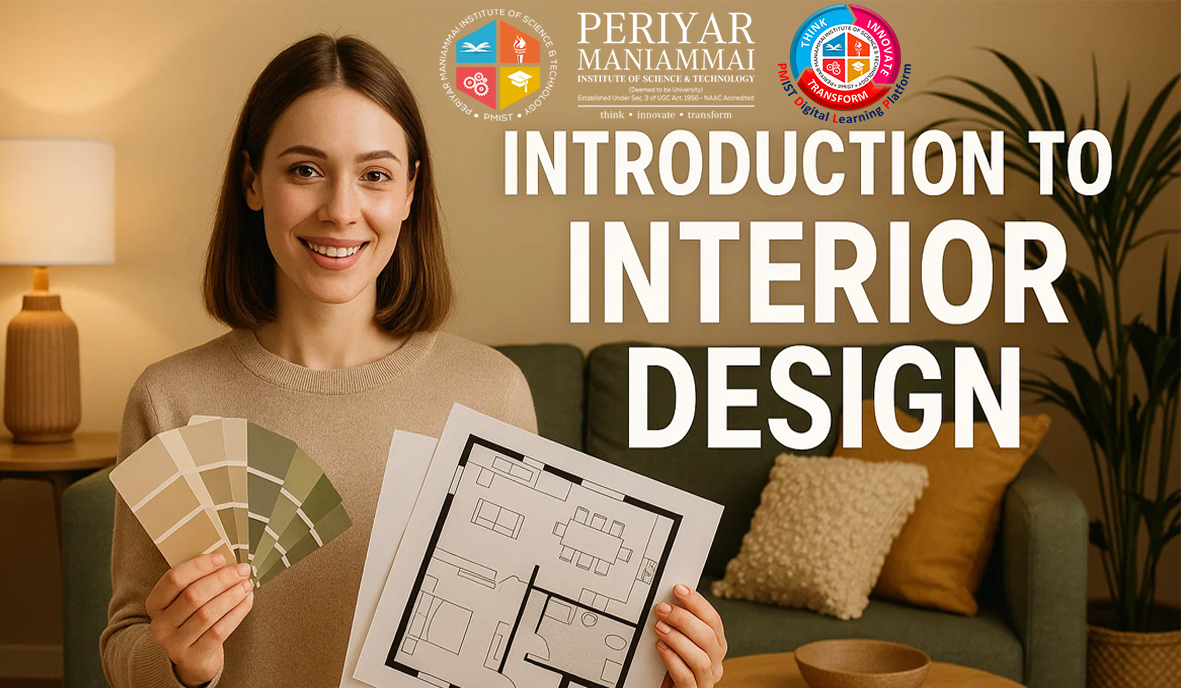

Note: Please check your Spam or Junk folder, in case you didn't receive the email with verification code.
Adaptive:Personalised Learning
Introduction to Interior Design
Course Overview:
This foundational course introduces students to interior design principles, blending theory with practical application. It covers key concepts like balance, color, space planning, and the creative and technical aspects of enhancing interior environments.
Module I: Introduction
Covers the basics of interior design, including its meaning, process, essential vocabulary, and design considerations across various space types (residential, commercial, institutional).
Module II: Elements of Interior Design
Explores fundamental design elements—line, form, scale, color, texture, pattern, space, and light—and their role in creating cohesive, functional interiors.
Module III: Principles of Interior Design
Focuses on design principles such as harmony, balance, rhythm, emphasis, and proportion, guiding effective spatial composition.
Module IV: Color and Lighting
Examines the emotional and functional impact of color and lighting, including color theory, lighting types, and their strategic use in interiors.
Module V: Interior Space Components
Covers essential components like floors, ceilings, walls, windows, and accessories, emphasizing material selection, finishes, and design integration.
Introduction module provides a foundation in interior design by defining key concepts, outlining the design process, and introducing essential terminology. It also examines how different space types (residential, commercial, institutional) influence design strategies.
 Introduction
Introduction
 IID - Assessment 1
20 Questions
IID - Assessment 1
20 Questions
Elements of Interior Design module explores the fundamental elements—line, shape, form, color, texture, scale, space, and light—that form the visual and functional basis of interior design compositions.
 Elements of Interior Design
Elements of Interior Design
 IID - Assessment 2
20 Questions
IID - Assessment 2
20 Questions
Principles of Interior Design module covers core design principles such as harmony, balance, rhythm, emphasis, and proportion, highlighting their role in achieving cohesive and aesthetically pleasing interiors.
 Principles of Interior Design
Principles of Interior Design
 IID - Assessment 3
20 Questions
IID - Assessment 3
20 Questions
Colors and Lighting in Interior Design module examines the impact of color and lighting on mood, perception, and functionality. Includes color theory, emotional effects, lighting types, and design considerations for effective spatial illumination.
 Colors and Lighting in Interior Design
Colors and Lighting in Interior Design
 IID - Assessment 4
20 Questions
IID - Assessment 4
20 Questions
Components of Interior Space module focuses on physical components like floors, ceilings, walls, windows, and accessories. Discusses materials, finishes, and their role in enhancing the character and usability of interior spaces.
 Components of Interior Space
Components of Interior Space
 IID - Assessment 5
20 Questions
IID - Assessment 5
20 Questions
 IID - Final Assessment
50 Questions
IID - Final Assessment
50 Questions
The certificate issued for the Course will have
Only the e-certificate will be made available. No Hard copies. The certificates issued by Periyar Maniammai Institute of Science & Technology (PMIST). can be e-verifiable at www.ulektzskills.com/verify.



 90 hours Learning Content
90 hours Learning Content 100% online Courses
100% online Courses English Language
English Language Certifications
Certifications